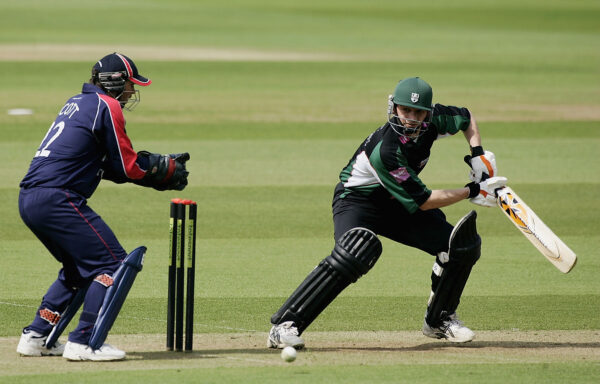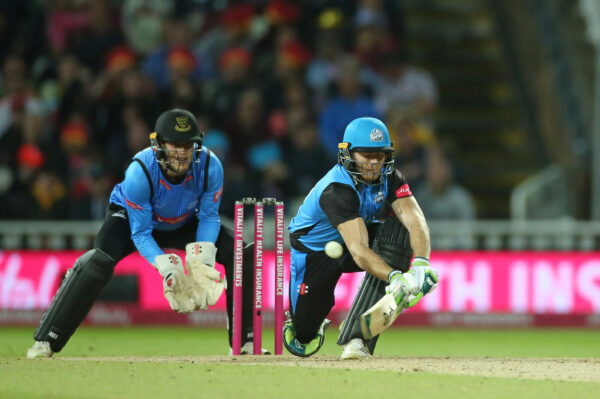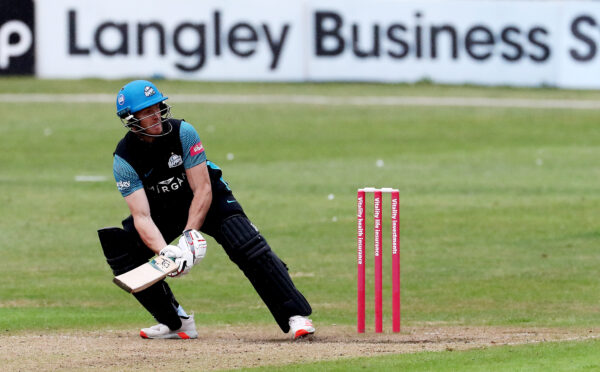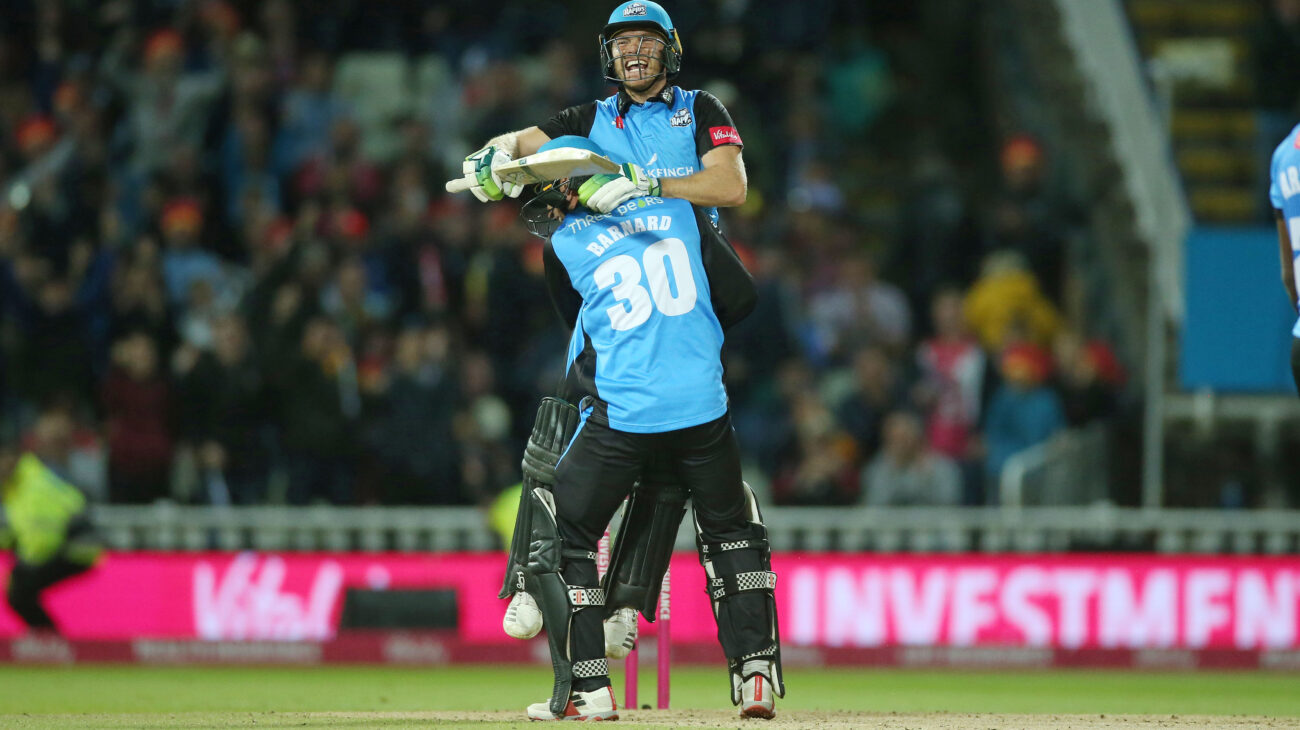When T20 cricket began in England in 2003, a lot of players and most spectators regarded it as something of a circus. Many still do. Except that now it is the glitziest circus on the planet, a show that can set its participants up for life, even if the majority know they will be judged by their performances in the red-ball stuff. Yet two of the eight sixes Ben Stokes struck at Headingley in 2019 were perfected in the IPL, and no one I know would go back to the era in which the English season consisted of say, 22 three-day games spiced by the occasional knock-out.
None of this was even glimpsed nearly two decades ago when Stephen Moore and Mark Harrity’s last-wicket partnership took Worcestershire to a one-wicket victory over Northamptonshire in the first Twenty20 match played at New Road.
“We took it seriously but there was a sense in which we didn’t know what we trying to do for a lot of the time,” said David Leatherdale, who made nine in that opening game but recalls virtually nothing of the occasion.
“You had to think on your feet every single match you played. No one had ever experienced T20 in county cricket, although everyone who had played junior club matches had played the short-form game, as I did when I was at Pudsey St Lawrence in Yorkshire. But the way you played a twenty-over game then was probably pretty similar to the way you played a 50-over match. There was no difference in attitude; we had the same team and the same players doing the same jobs. We just tried to do things a little bit more quickly.”

Leatherdale’s reference to league cricket is a useful reminder that twenty-over knockout cricket had existed across England long before T20 became the game’s cashpoint. Bad weather also meant that games in the John Player League were often reduced from 40 overs per side but Mike Brearley’s recollection of one of these in 1971 is useful.
In my first year as captain of Middlesex we played a ten-over game against Glamorgan at Ebbw Vale. As we fetched our bags from the cars (the rain had unexpectedly stopped at about tea time) I said excitedly. “We’ll have to think about this!” The senior players found this hilarious: Think about a ten-over match! About a sheer slog! I can see their point; in those days I did have too much confidence in the power of thought in predicting or controlling events.
Nowadays, of course, a battalion of analysts are employed to dissect ten-over matches in the hope that these occasions can be micro-managed. Though such notions were far from the minds of Leatherdale and his colleagues, they still realised that times were changing.
“We had none of the technical information players get now but we did realise that simply doing things quicker was not going to work,” he said. “We moved into the field of specialisms and picking people for specific tasks. It felt quite weird, to be honest, and in addition, the 18 counties all had different coloured clothing with the players’ names plastered all over it. I don’t think anyone knew how to play T20 for a few years.
“The idea of keeping the ball on the ground disappeared fairly quickly and we tried to bowl yorkers at the end of an innings but no one really bowled slower balls until Ian Harvey at Gloucestershire and he became very successful very quickly. He had the ability to bowl the ball out of the back of the hand and it took people a very long time before they could get close to picking it.
“The coaches had been brought up on old-fashioned techniques and they weren’t many who were forward-thinking. We’d won the Sunday League in 1987 and 1988 and we were winning games with scores of 160 and 170 on wickets that weren’t particularly fantastic. And we didn’t know what a good score was in T20 – was it 100 or 120? – and when we first went played it, we took the view that you had to keep wickets in hand.. By the third year we were gradually getting savvier. Our first captain, Ben Smith, was one of the first to play the ramp shot and his successor, Gareth Batty, was always innovative. But it took a long, long time before we began to think of players as one-day specialists. Four-day cricket was still more important.
“The pinnacle at that time was playing at Lord’s in a 50-over final but it didn’t take long before we realised that playing at The Oval or Edgbaston with 25,000 people going bonkers was something we wanted to do. At the same time I think if someone said they realised T20 would develop as it has, they are probably blagging it. The focus was still around winning the title. Back then we’d play four-day cricket and a T20 match at the end of it before going back to the Championship. We were trying to innovate but not at the cost of the four-day game.”

Mention of Edgbaston will always stir warm memories of the 2018 Finals Day for Worcestershire supporters. There may not have been 25,000 in the ground when Ben Cox made his match-winning 46 not out off 27 balls in that year’s Blast Final but the Pears supporters who had made the short journey north certainly went cheerfully bonkers when the trophy was won. Yet any similarities between Cox and Leatherdale’s experiences are more in the nature of coincidences than substantive comparisons. (The 18-year-old Cox also made his T20 debut against Northamptonshire and, like his senior colleague, can remember virtually nothing of the match in question: “I sat a Business Studies exam at school that morning and I recall more about that than I do about the game. I finished with decent grades, so the exam didn’t go too badly.”)
Delve a little deeper, though, and Cox will give you a detailed tutorial as to his role in T20 cricket in general and his specific responsibility that September evening in Birmingham. Worcestershire were 80 for three when he arrived at the wicket. Ten balls later they would be 90 for four after 11.5 overs and Sussex’s total of 157 was beginning to look a little distant.
“I remember it so well because I was thinking clearly,” he said. “My role was always to be the finisher and take an innings deep. I wanted to get in and at least give ourselves a chance. We weren’t in the best situation so it was my job to soak up a bit of pressure and rotate the strike. In those situations you have to give yourself a chance to chew up some balls and score five runs off ten balls if necessary. I genuinely love pressure; it gets the best out of me. It’s as if I’m saying: ‘Watch me, I can do this’ I like proving people wrong.”
Cox certainly did precisely that in 2018. To use the modern idiom he “took down” a Sussex attack that was made up of international seamers and specialist T20 spinners. His unbeaten 46 included five fours and a couple of sixes. It enabled Worcestershire to stroll home with nine balls to spare.

But Cox had already had a busy day. He had made a rapid 55 not out in the semi-final victory over Lancashire and had conceded no byes in either the semi-final or the final. On top of that, he had been trusted to make vital field changes from his unique vantage point behind the stumps.
“Wicketkeeping in T20 is very close to being a captain,” he said. “The captain and the bowler have their plans but I have the best view in the house when it comes to working out the angles and cutting off a batsman’s best shots. I’ll know what my bowler’s plans will be and their field will tell me even more clearly what they’re going to do. If I think Browny’s going to bowl a knuckle-ball, then there’s no point in anyone being fine on the off side. And all the captains I’ve played under have been very understanding and have been happy with me moving the field.
“In T20 you’re still pulling strings but you’re doing so in a different way.
When you’re stood next to a batter you get a sense of how they are feeling, whether they are under pressure and what sort of shot they might be considering. I’ll also tell Moeen what I think the pitch is doing at that precise time and he will make the final judgement. That role comes with experience. In my early years I had to learn very fast but once I was holding my own as a keeper it was easier for me to take that responsibility as a keeper. And you also learn how to take the harsh ups and downs.”
Those fluctuations weren’t long in arriving last summer when Cox was entrusted with the Pears captaincy while Moeen Ali was on England duty. His debut as skipper saw Worcestershire suffer a ten-wicket annihilation at the hands of Nottinghamshire but 24 hours later Cox’s batsmen made 179 to come within a couple of good hits of beating Yorkshire at Headingley.
“The game’s moved on a lot in terms of how we can build totals in short-form cricket,” he said. Daryl Mitchell says everything was a bit gung-ho in the first few years. There were certain theories but no one found the right formula. As the years have gone on the competition has got a lot tougher.
Everyone’s bought in to the idea that you should back yourself and if you get bowled out for 61, that’s okay because the odds will be in your favour the next day. A prime example of that was against Notts this year: We were bowled out for 86 and lost inside seven overs of the second innings of that game but the following evening we got 179 and went down by only 12 runs the game at Headingley. The wheels could have fallen off after the first game but we had a harsh conversation and we addressed it. That Notts game was my debut as skipper and I didn’t know what was going on.”
Perhaps not, but Cox is still one of the shrewdest observers of short-form cricket and his acuity has come at least in part, from his having watched the transformation of T20 over the last decade. That extends as much to winter employment possibilities as it does to specific techniques.

“There are opportunities to play T20 everywhere now,” he said. “In 2010 there were rewards available if you got to the Champions Trophy but now there are more openings around the world and that’s partly because of the T20 competition we have in the UK and because the English white-ball team has done so well. What’s more, the success of players like Ian Cockbain and Joe Clarke in the Big Bash showed that they are just as good, if not better, than players from other countries.
“There’s also more clarity throughout the side as to what people are trying to do. When I batted with Ross Whiteley there was no point in him trying to dink it, so we worked together whenever we shared a partnership. To have six or seven players who can bat in different ways is to have a dynamic batting order. In T20 cricket it takes one bloke to have a day out and your day’s done. Jonny Bairstow, who made 112 off 51 balls against Worcestershire in T20 last summer, took the game away from us at New Road and we then needed one win from the last two matches to make the quarters. But Josh Inglis made a hundred for Leicestershire in that final game and I haven’t seen many people hit the ball turning away from him as well as he did over cover and mid-off.”
Perhaps therefore, it is not surprising that when offered the choice of winning the Blast or the Second Division this season, Cox chooses the short-form trophy. But his rationale is revealing and more subtle than one might suppose.
“I play for trophies, and I think I’d go for the T20 because I’d want to be the best twenty-over team in the country in preference to being the 11th best team in four-day cricket. But if the question was between the County Championship and the T20, it would be the title.”

Worcestershire Rapids v Sussex Sharks, Vitality Blast t20 Final, Edgbaston, Birmingham. 15.8.2018.
Picture by Tony Marsh.
Contact +447860 461617 cricpix@yahoo.co.uk




















































